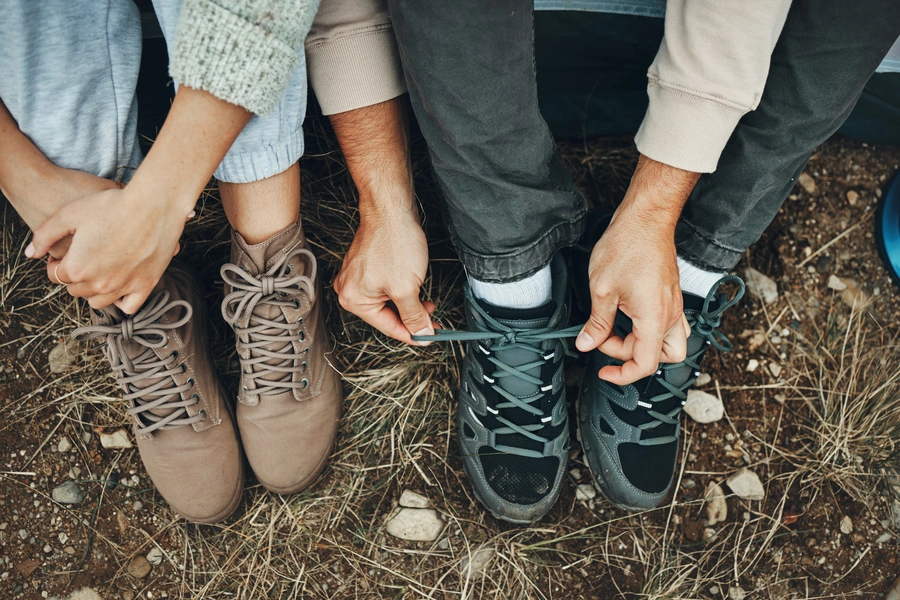Properly fastening your walking boots may appear to be a simple task but executing it correctly can greatly impact your hiking journey. Employing the appropriate lacing technique can heighten comfort, enhance foot support, and safeguard against common hiking afflictions like blisters and hot spots. Whether you’re setting off on a leisurely walk in the countryside or tackling challenging terrain, mastering the art of lacing your walking boots is essential. Here’s how to lace up your boots for maximum comfort and efficiency.
1. Start with the Right Fit
Before you even begin lacing, ensure your walking boots are the right fit. They should be snug enough to prevent your foot from sliding forward but not so tight as to constrict movement or blood flow. Remember, your feet can swell during a long walk, so there should be enough room to accommodate this.
2. The Base Tie
Start by threading the laces through the lowest eyelets of your boots, pulling them evenly. This base tie is important as it sets the foundation for the rest of your lacing. The laces should be flat against the boot, without any twists, to ensure even pressure distribution.
3. The Surgeon’s Knot
For added security at the base of your foot, use a surgeon’s knot. After the base tie, cross the laces and go under twice instead of once before pulling tight. This creates a more secure knot that can prevent your foot from sliding forward, reducing the risk of toe bang on downhill sections.
4. The Heel Lock
To prevent heel slippage, which can lead to blisters, use the heel lock lacing technique. This method involves forming loops with the laces above the foot’s instep, after the initial set of hooks. Then, cross the laces and insert each end through the loop on the opposite side before firmly tightening them. By doing so, the heel is securely held in position, offering additional stability.
5. Adjusting for Comfort and Support
As you continue lacing up through the hooks or eyelets, adjust the tension according to the needs of your foot. Give a bit more slack to areas that feel tight or pressured, and lace up more tightly in sections that need additional support. This personalised approach is important in attaining lasting comfort throughout the day.
6. The Top Tie
Once you reach the top of your boots, finish with a strong bow knot that won’t come loose during your walk. For extra security, you can use a double bow knot or even a surgeon’s knot at the top.
7. Fine-Tuning
Once you have fastened your boots, take a few steps, and flex your feet to assess their comfort. It may be necessary to make minor adjustments to the tightness in certain areas. Achieving the perfect lacing tension will ensure that your foot remains stable without cutting off blood flow or causing any form of discomfort.
8. Consideration for Special Conditions
- High Arches: If you have high arches, consider skipping a few eyelets right where the arch of your foot is to prevent undue pressure.
- Wide Feet: For wide feet, try a looser lacing technique at the front and tighter around the ankle to provide support without squeezing the wider part of your foot.
- Narrow Feet: On the other hand, if your feet are narrow, you might want to lace your boots more tightly at the front to prevent sliding and use a heel lock to keep your foot in place.
9. Practice Makes Perfect
Like any skill, perfecting your lacing technique takes practice. Experiment with different methods and tensions until you find what works best for your feet and your hiking style.
Properly lacing your walking boots is not just about tying knots; it’s about understanding your feet’s unique needs and how to best support them during your walks. By mastering the art of lacing, you can greatly improve your comfort, performance, and overall enjoyment during hikes. Remember, the right start leads to the right path, and it all begins with how you lace up your boots.

